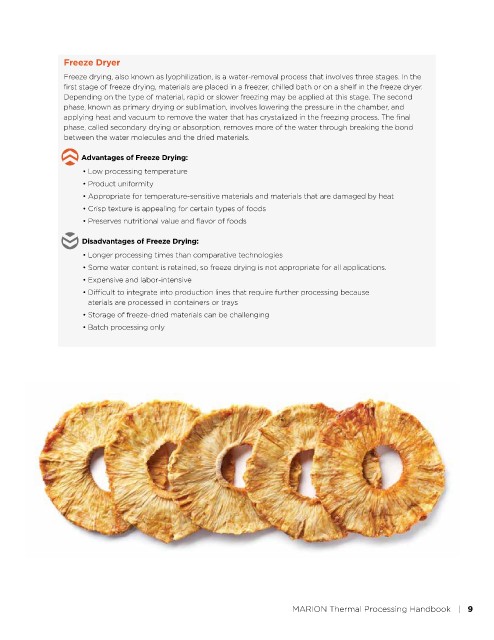Page 2711 - Flipbook_SolidDesignSoutheast2020
P. 2711
Freeze Dryer
Freeze drying, also known as lyophilization, is a water-removal process that involves three stages. In the
first stage of freeze drying, materials are placed in a freezer, chilled bath or on a shelf in the freeze dryer.
Depending on the type of material, rapid or slower freezing may be applied at this stage. The second
phase, known as primary drying or sublimation, involves lowering the pressure in the chamber, and
applying heat and vacuum to remove the water that has crystalized in the freezing process. The final
phase, called secondary drying or absorption, removes more of the water through breaking the bond
between the water molecules and the dried materials.
Advantages of Freeze Drying:
• Low processing temperature
• Product uniformity
• Appropriate for temperature-sensitive materials and materials that are damaged by heat
• Crisp texture is appealing for certain types of foods
• Preserves nutritional value and flavor of foods
Disadvantages of Freeze Drying:
• Longer processing times than comparative technologies
• Some water content is retained, so freeze drying is not appropriate for all applications.
• Expensive and labor-intensive
• Difficult to integrate into production lines that require further processing because
aterials are processed in containers or trays
• Storage of freeze-dried materials can be challenging
• Batch processing only
MARION Thermal Processing Handbook | 9

